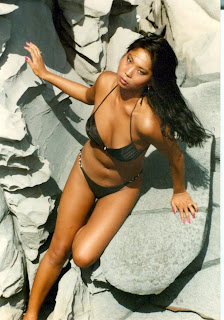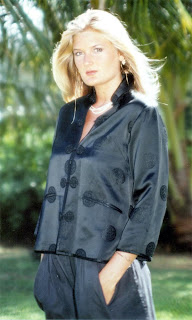The question is asked more and more frequently these days, and it came up again just this week. "Will you give us a copy of the photographs on disc?" More and more people are wanting and expecting that when they hire a photographer to make portraits or photograph their wedding, they will receive a disc of images that they can print themselves, or take to Wallmart or Costco to have prints made.
I understand the reasons for this, but it still irritates me! When all photographers used film, it was rare that negatives were offered as part of the deal. That business model was in existence, but it represented a very small percentage of photographers. And typically it was wedding photographers who sold a package including the photography, (of course), an album or albums, and the negatives. Basically they figured that they would probably never get a re-order anyway, so why not give the negatives to the client since otherwise they'd just be storing them and taking up space.
That business model was rare with wedding photographers, and even more rare with portrait photographers! Fast forward to the Digital Age.... For some reason with the advent of digital photography and the availability of reasonably priced digital cameras, a huge number of people who like making snapshots, and their friends tell them how nice their photos are, fancy that they can market themselves as "professional photographers".
I have no problem with competition. I think it's wonderful that more people are enjoying photography. I think the digital revolution is the best thing that's happened to photography in years! Maybe ever! However, there are standards that need to be met before one can conscientiously call themselves a professional photographer!
You see, photography is both art and science. Ever since cameras have been mass produced there have been people who have enjoyed making snapshots, and many have been talented hobbyists. There have been 1000s of snapshots that were lucky enough to really come out good! But because every now and then a snapshot comes out really nice, doesn't qualify one as a professional!
What has happened in recent years is that a lot of folks have got themselves a good DSLR, and having some luck with shooting in program mode have made some good photographs. Then they figure, "Well, look at this...I can make photos as good as the Sears studio, (or name your favorite big box store or studio), so now I can hire myself out and make an income with my camera!" This has been the beginning of the dumbing of America when it comes to professional photography.
I don't know if you've noticed, but I sure have...The decline of quality images in a lot of professional mediums, such as magazines and PR publications. That is what happens when the first priority is to get the photos as cheaply as possible. This becomes the case when there are so many amateurs professing to be professional, and willing to work for near to nothing. You then get buyers thinking they're doing their employer a service by saving money, when what they're really doing is a disservice because the images they get are just barely good enough. As a result the employer's products are represented by photographs that don't do them justice.
The biggest problem with this is that over all, expectations are lowered and quality continues to decline. When this happens in commercial photography, the general public begins to lower their personal expectations for photography. Besides, just about everyone now has a printer capable of making pretty nice photo prints. So why not hire the photographer that will "shoot and burn", and you get the images and can print them yourself for pennies? Smart investment...right?
Not in my opinion. As an artist and businessman, I've never given the negatives to my clients. True, when working with film I would turn over the negatives to my lab, then after seeing the "proofs" I would give instructions for enhancements and retouch, etc., and leave it to the lab to complete. Now with the digital work flow, I do the art work and enhancements myself. And now after firing at least 6 labs for letting their quality control go downhill, I've invested in a state-of-the-art printer, and do the printing and finishing myself as well.
Does that sound like a professional who doesn't care how the finished product turns out? I think not! In fact, the reason I don't give the digital negatives, or the enhanced and artworked images to my clients is beacause I DO care how the finished product turns out! And I believe that it is the responsibility of the professional to make sure the finished product turns out right.
As I mentioned I've fired several print labs. They generally start out doing a good job because they want the business, but then after a while they quality control goes down. When that happens both time and money is lost because I refuse to deliver sub par results to my clients. And I have a very high standard when it comes to my work.
Here's the thing...I specialize in portraiture: Families, children and high school seniors, because I'm passionate about it! I love photographing people! I love watching their expressions and hearing their comments when I deliver their portraits to them. I know I'm adding joy to their lives with the work I do for them.
I've given clients permission to have a particular portrait reproduced for greeting cards or invitations in the past. As a courtesy. Mostly because it cost's me more to print them than what they can get them done for at a discount printer....But, I've seen some horrible reproduction of my work...and that sickens me! I put my time, no, I put my heart and soul into creating beautiful photographs. I spend my time doing enhancements and art work to the photographs so that they are as beautiful as they can be. Because I care! I should then turn the images over to the client to go fend for themselves and try and get a decent print from them? NO WAY!
I spent many years studying photography. I went to school to learn all about color harmony, composition, balance, and how to achieve various different results with my camera. I apprenticed with a master photographer. I've been creating portraits now for over 30 years. I put my time, experience and artistry into every portrait I make. I won't stop there! I make sure the color and density is right, and I print the portraits I create. And if they don't look right, I do it again! I will only deliver the very finest, most beautiful finished portraits possible. It just makes no sense to invest passion, time, experience and artistry into making beautiful portraits, then let just any printer, who has nothing invested, and doesn't really care how they turn out, print them. And that's why I don't give the printable images on disc to my clients.




